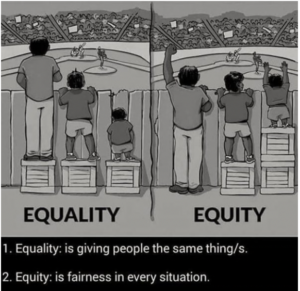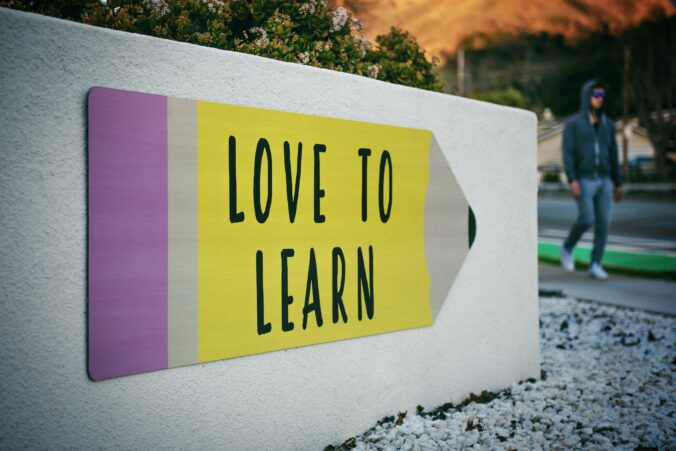Hello, Pod 3! I’ve gone through your Interactive Learning Resource with the criteria in mind. I’ve copied & pasted the criteria, then wrote feedback for each part.
Peer Review for Pod 3’s Parkinson’s Disease Interactive Learning Resource
Derived from: EDCI 335’s Interactive Learning Resource Description: I input my feedback throughout in bold italics.
Your task in this assignment is to work with your group to create a learning resource related to the topic of your choice (ideally a topic within your academic major).
I see that your group members are mostly in Health and Information Science. Your topic of Parkinson’s Disease is a great choice relating to your majors!
The resource should take approximately 1-2 hours for a learner to complete.
You’ve stated that the course will take 1-2 hours to complete under your “description and rationale for the learning design you chose”. I think that it was very powerful of you to explain how your chosen teaching method, direct instruction, helps to contribute to this time limit as direct instruction can be a quicker avenue to learning in your particular topic than other teaching methods might be.
You should presume that you need to teach 15-20 people who are assumed to be in K-12, higher education, or are adult professionals.
You’ve stated that your resource will be for the Grade 12 age group, awesome! 20-30 students may be too many based on the criteria provided for us, but you could always check with Behnoosh to ensure this number is alright.
Your learners are spread across Canada and come from a variety of ethnic backgrounds. You should assume that two of the following contexts are present in your group of learners:
- colour blindness
- English language learner (ELL)
- loss of hearing
- single parent who is working full-time and has 2 kids in elementary school
- a person who does not have access to a computer at home, but has a mobile phone with a data plan
- your group can propose another context, but please check with your instructor first.
You’ve stated that you are designing your resource to include students with loss of hearing and a person who does not have access to a computer at home, but has a mobile phone with a data plan. I go into detail about your plans for these inclusion pieces further below.
You should use at least one, and ideally a combination, of the technology tools that we discussed in the course. Your learning resource will be reviewed by your peers before you submit it to your instructor during the final week of the course, and they will need to be able to complete the activities as if they were an actual learner in your target audience.
You must include the following in your resource:
- An overview of the resource
Your overview looks great. It gave me a clear outline of what to expect from your resource.
- A description and rationale for the learning theory upon which your resource will be based (behaviourism, cognitivism, constructivism)
You’ve clearly defined your learning theory of choice, cognitivism, and have provided the rationale for why you’ve chosen this learning theory.
- A description and rationale for the learning design you chose (inquiry, project-based, direct instruction, etc)
You’ve chosen the “direct instruction” teaching method for your resource. I love the way that you explained the purpose for this method. You’ve clearly outlined how “direct instruction” is an effective teaching method for your chosen topic and interactive activities.
- A description of your learning context (K-12, higher ed, corporate, individual, etc)
You’ve stated that you are “assuming that the learners are in K-12, higher education, or adult professions”. I wonder if this is too wide of a demographic of people/ages. Perhaps depending on whether you think your resource is more suited for younger or older people you could narrow it down and just choose one group. To explain further, if your resource is made for professional adults working at a corporate level, it is probably not also suitable for Kindergarteners.
- 2-4 learning outcomes (copied or revised from your blueprint)
Your learning outcomes are clear and concise. I can easily identify what your students will be accomplishing or trying to accomplish with your resource. If I am understanding correctly, you have 3 outcomes highlighted in green. Your group has 4 members, so I believe that we are supposed to have one outcome per group member. You may want to add one more outcome because of this reason.
- Brief commentary about each topic and activity
Under each of your learning outcomes, you’ve stated that you will “create content”. I’m sure that you are getting to this, but what content will you create? For example, under your first learning outcome which is to “define what Parkinson’s disease is”, more detail can be added about the content such as describing what Parkinson’s disease is.
You’ve also stated that you will do a poll/quiz for each learning outcome. Something that may be helpful may be to clearly state what will be in the poll and quiz. What are the questions? What are the answers? Again, I’m sure you’re getting to this, but it’s just something to keep in mind!
- One interactive activity for each learning outcome/topic based on a resource aligned with that topic (blog post, video, article, etc)
For each learning outcome you’ve stated what your interactive activities will be. I think that more information needs to be added here. For example, for your first outcome’s interactive activity, students will be posting a “self-reflection blog of what they learned and what they found interesting”. Something that may be helpful for students’ would be seeing an example of what their blog is to look like and/or contain. This can also be said for your second and third interactive activities. Additionally, I think you probably are, but you need some more clarifying information about these activities such as what the Case Study IS for your second learning outcome.
Additionally, further down your resource you have stated that you will use a “drag and drop interactive activity for Parkinsonism and parkinsons identification” but I don’t see this throughout your outcomes/lessons. I think this is a great idea for an activity and would love to see it included!
- An overview of your assessment plan.
I think that your plan to provide students with formative feedback through polls and Kahoots is very effective. It’s low-stakes and something that students can learn from immediately.
For your summative assessment, you’ve stated that you will do a “short test”. I enjoy that the content of the test is the content that you’ve stated you will cover in your outcomes/lessons, but I didn’t see this test anywhere through your lessons. Will it be at the end of your 3rd outcome/lesson? It would also be helpful to see this test, which I’m sure you are working on.
- An overview of your plans to design for inclusion of diverse learners (choose two from the list above, and specify in your resource).
Loss of hearing: You have good ideas and actions to take for including students with loss of hearing. I think that throughout the resource it would be useful for you to restate under each outcome/lesson how this lesson is supporting this inclusion.
A person who does not have access to a computer at home, but has a mobile phone with a data plan: I appreciate that you’ve created your resource for activities that can be done on a phone. I would again suggest to state after each outcome/lesson that this is possible. Additionally, going to a library is a good option for some people, but I wonder about all people. Some things to consider are: What if they are in Kindergarten? What if the library is far away from them and they don’t have access to a vehicle or public transportation?
- A rationale for your technology choices.
You’ve clearly stated rationales for most of your technology choices. A rationale for YouTube is still need. Additionally, under your learning outcomes, you’ve stated that you will use Kahoot, and an infographic but this is missing from your rationales. What will students use for the infographic? One technology I know for this is Canva!
Links to each peer review of your resource
- A rationale for why you did or did not incorporate your peers recommendations into your final resource
Make sure you link this! 🙂
- A bibliography or reference list of all resources cited and/or required for your learners;
- Use whatever citation format you are comfortable with (APA, MLA, etc) but please be consistent throughout.
You still need to add a reference list for your used resources. Make sure that you choose just one citation format, such as APA, and stick with it throughout!
Overall feedback:
I think that your interactive learning resource has a lot of potential! It still does need some additions before it can be used by teachers or learners. One thing I wonder about is if you are going to keep the resource on the Google Doc and have learners work through it, or if you could use another platform such as Notion. I am excited to see it when it is completed and ready for teachers and learners to use. I hope that my feedback has been helpful. Thank you, Pod 3!
https://docs.google.com/document/d/1IYVboXpjw0kQbcenJHI5QhFb_wCI6qwQm399TqB-xYY/edit



